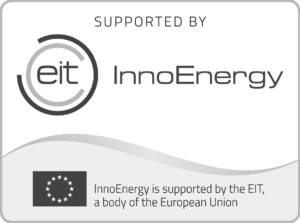24.09.2019
Guardtime: World’s Leading Blockchain Company
Guardtime, the largest blockchain company in the world, comprises a team of over 200 cryptographers, developers and security architects with decades of experience defending networks from nation-state attacks. If Google organises the world’s information and makes it universally available, then Guardtime validates that information and makes it universally reliable.
Founded in Estonia in 2007, Guardtime developed its KSI blockchain technology, a mathematically secured cybersecurity solution for detecting the use and misuse of digital data and devices. Thanks to its architecture, blockchain maintains the history of digital data changes and can instantly identify who has changed the digital data and when, doing so quickly and simultaneously for large amounts of data.
KSI blockchain technology is not only used by the Estonian Government for eliminating third parties, trusted insiders or cryptographic keys in the verification of the integrity of government records, networks and systems, but it has also proved indispensable in numerous industries, ranging from insurance to defence to healthcare.
Making data visible instead of sharing it
Today, Guardtime’s expertise lies in building enterprise products. “We work with partners,” describes Ain Aaviksoo, Chief Medical Officer of Guardtime Health, “leveraging our technology stack to build new products and services which we then market.” He adds that all the company’s solutions are based on the same underlying technology platform, HSX, enabling Guardtime to go from idea to production in a matter of months.
Guardtime Health, one of the company’s core business lines, is dedicated to bridging the gap between patients, providers, payers, regulators and life science companies by seamlessly transporting data across multiple stakeholders, delivering secure use of a single truthful version of health data.
Aaviksoo explained that privacy concerns from increased data sharing in healthcare could be eased in some cases with solutions that allow access for computing at the origin but do not require the actual transport of data—in other words, data is made “visible” but not “liquid”.
“Our HSX platform is being used within the Estonian healthcare system and enables application development through software APIs for more diverse solutions,” Aaviksoo explains and brings examples such as data access (consent) management, virtualised clinical trials, outcome-based contracting, medication adherence, downstream diversion detection and upstream active substance provenance.
By now, Guardtime has introduced several successful projects to re-shape the health industry such as launching Guardtime Helium, the world’s first completely independent data processing transparency and oversight platform for large scale medical and genomic data access in partnership with Estonian Biobank, securing nationwide (Estonia) health records and their usage with the immutable KSI blockchain solution as well as launching the world’s first blockchain-supported Personal Care Record Platform (MyPCR) in partnership with Instant Access Medical and Healthcare Gateway in the UK.
Brave predictions for a data-rich future
Aaviksoo agrees with the consultants and market analysts who predict dramatic growth in health data business. The boldest estimates amount to hundreds of billions a year, while majority estimates remain at around 50 billion, says Aaviksoo. “It all starts from the definition of the market,” he added, “but what seems to be consistent is the expectation of at least a 3-fold increase in 5 years’ time, creating many new opportunities.”
Aaviksoo says that an extremely important assumption every analyst or investor makes for the dream to come true is that the access and usability of health data will improve or at least remain the same as today. “But arguing over who owns the health data and what this ownership means or how much individuals owe to society in return for new treatment opportunities takes a long time and considerable energy,” he said, adding that there is likely no simple solution that pleases all.
According to Aaviksoo, the alternative way may be to look for a consensus on conditions when data liquidity (a situation where personalised health data travels), and how much of it, benefits the individual and when there has been enough data visibility (when personalised health data is not travelling but is only an aggregate of many or zero-knowledge proof of the query) to support data analytics or enable outcome-based contracting or facilitate treatment adherence programmes.
“Supply chains in healthcare could also benefit from greater visibility by allowing better management of public health crises due to unforeseen disruptions in medicine supplies that arise with increasing frequency in Europe, the US and globally,” Aaviksoo explains. In his opinion, an alternative or at least feasible support to the draconian enforcement tools so often imposed by regulators could be an elegant solution whereby only the aggregated sum of stock levels from the entire market, excluding individual proprietary business data, are made available to the regulators for predictive analysis, planning and interventions.
“Such approaches are possible,” he added, “if the original data can be trusted—like enabling KSI blockchain-based integrity solutions—and other cryptographic methods can facilitate non-disclosing information processing functions.” He believes that blockchain has huge potential in healthcare for protecting data integrity (independently auditable immutability, access and provenance), whilst other methods and technologies help facilitate its business value in data transactions.
Aaviksoo believes that being part of the Connected Health cluster allows productive discussions to take place on how technology can help solve multi-billion-dollar questions as well as lead to rewarding partnerships that shape the future of the healthcare industry.












